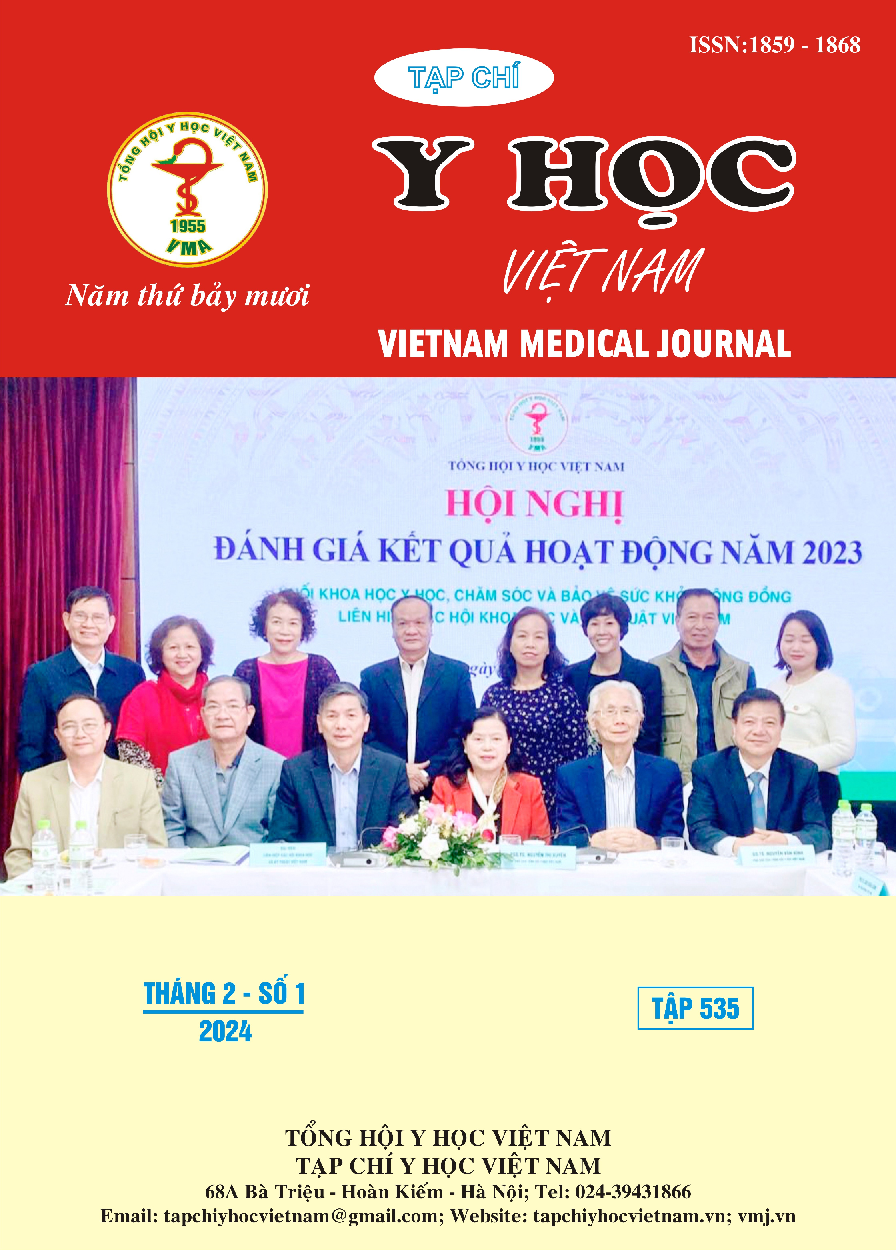BIOLOGICAL CHARACTERISTICS OF THE DERMATOPYTES THAT CAUSE ONYCHOMYCOSIS
Main Article Content
Abstract
Objectives: To investigate biological and chemical features of dermatophytes that cause onychomycosis. Population and methods: Cross-sectional description on 149 patients diagnosed with onychomycosis at the National Hospital of Dermatology and Venereology from September 2022 to August 2023.The samples cultured on Sabouraud and cornmeal medium, observed gross and microscopic morphology and physical and chemical experiment. Results: 39 Of the 149 culture samples were positive for dermatophytes;Average colonization time is 11.1± 2.7, the shortest time is 5 days for colonies of M.canis and the longest is 17 days for colonies of T.tonsurans; morphological characteristics of colonies on SDA medium are very diverse.The morphology of large spores and small spores of each strain is different. Biological and chemical tests show diversity and contribute to the identification of pathogenic fungal strains. Conclusion: Onychomycosis is a prevalent disease in our country with the main cause being dermatophytes. Culturing and examining the biological characteristics of fungal strains contributes to species biodiversity and determines the relationship between pathogenic strains and clinical characteristics.
Article Details
References
2. Nguyễn Thị Đào, Nguyễn Đức Thảo, Tăng Minh. Bóc tách móng bằng Ure-plaste kết hợp với Griseofulvine trong điều trị nấm móng. In: Nội san Da liễu. Tổng hội y học Việt Nam; 1978:45-50.
3. Roberts D.T, Evans E.G, Allen B.R. Nail structure, yeast, candida infection. In: Fungal Infection of Nail. M.Mosby - Wolfe, U.K; 1998:28-68.
4. Piraccini B, Alessandrini A. Onychomycosis: A Review. JoF. 2015;1(1):30-43. doi:10.3390/ jof1010030
5. Youssef AB, Kallel A, Azaiz Z, et al. Onychomycosis: Which fungal species are involved? Experience of the Laboratory of Parasitology-Mycology of the Rabta Hospital of Tunis. Journal de Mycologie Médicale. 2018;28(4):651-654. doi:10.1016/ j.mycmed. 2018.07.005
6. Nguyễn Văn Đề, Phạm Văn Thân, Phạm Ngọc Minh. Kí sinh trùng Y học. 2nd ed. Nhà xuất bản Y học
7. Jung MY, Shim JH, Lee JH, et al. Comparison of diagnostic methods for onychomycosis, and proposal of a diagnostic algorithm. Clin Exp Dermatol. 2015;40(5):479-484. doi:10.1111/ ced.12593
8. Pang SM, Pang JYY, Fook-Chong S, Tan AL. Tinea unguium onychomycosis caused by dermatophytes: a ten-year (2005–2014) retrospective study in a tertiary hospital in Singapore. Singapore Med J. 2018;59(10):524-527. doi:10.11622/smedj.2018037
9. Rezusta A, de la Fuente S, Gilaberte Y, et al. Evaluation of incubation time for dermatophytes cultures. Mycoses. 2016;59(7):416-418. doi:10. 1111/myc.12484
10. Moriello KA, Verbrugge MJ, Kesting RA. Effects of temperature variations and light exposure on the time to growth of dermatophytes using six different fungal culture media inoculated with laboratory strains and samples obtained from infected cats. J Feline Med Surg. 2010;12(12): 988-990. doi:10.1016/ j.jfms.2010.07.019


